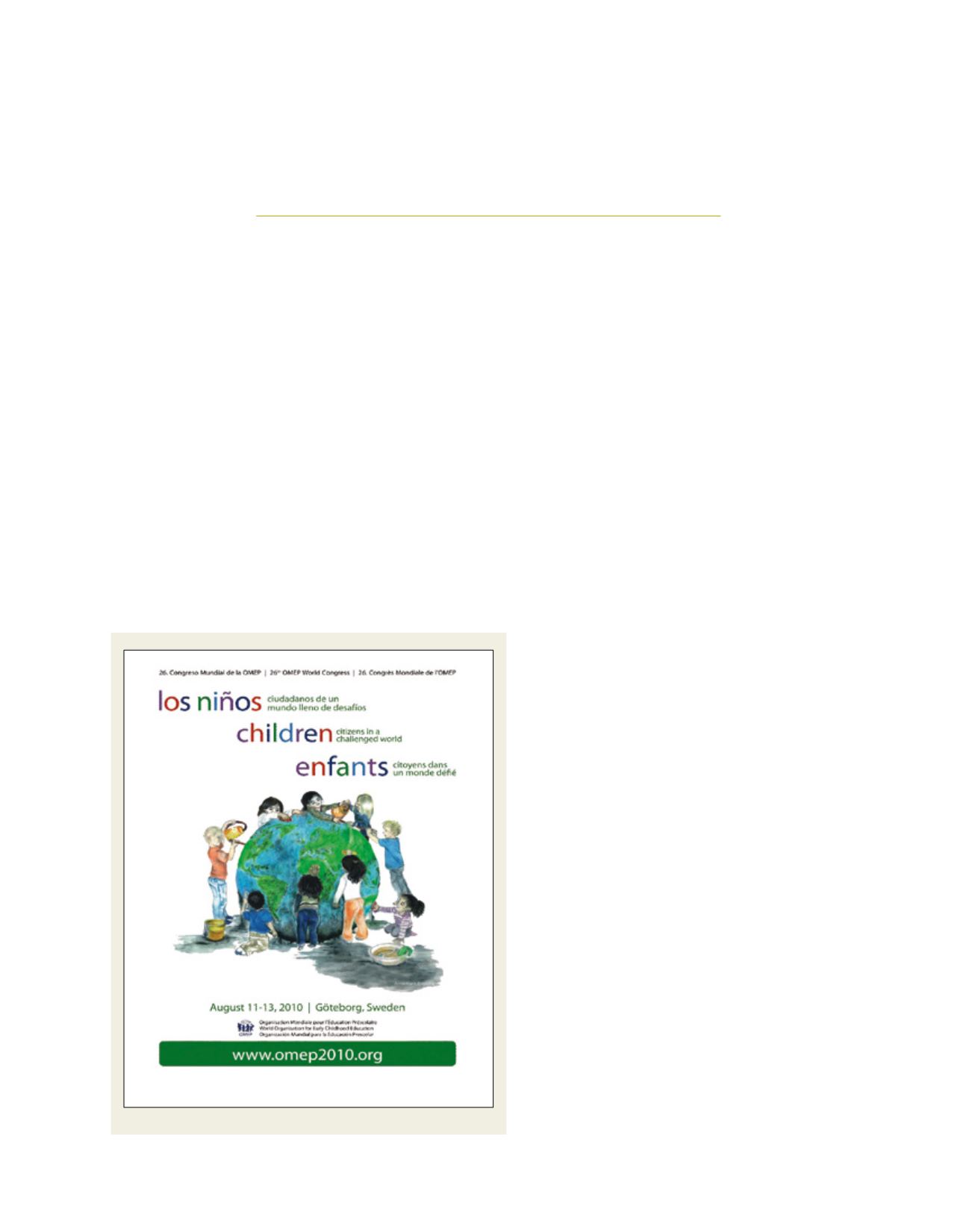

[
] 183
The foundations of ESD
in early childhood education
Ingrid Pramling Samuelsson, University of Gothenburg, Sweden
O
ne of the most important questions today is how to educate
the next generation for a sustainable society or a sustain-
able world. This is a question that implies environmental,
economic and socio-cultural integration. Today we know that we
(adults) use more than our fair share of the world’s resources.
This must change! But even though we are responsible for what
we have failed to do, we need to educate the next generation to
become better prepared for taking decisions towards ensuring that
worldwide economic development is sustainable. The next genera-
tion has to be better prepared than our generation has been to
revert from our unsustainable path of development and to meet
the challenges of our society. For our children to have a good life
in the future, we have to think of the future as beginning today,
and in particular with their education in early years. So what kind
of education are we talking about?
Working towards a sustainable world means getting our
priorities right: justice, human rights and ethics, notions
all included in democracy and the
UN Convention on
the Rights of the Child.
1
Wilkinson and Pickett
claim:
“The truth is that modern inequality exists because
democracy is excluded from the economic sphere.”
2
Democracy then becomes a key factor in education for
sustainable development (ESD) and in the education of
young children. This also includes knowledge of nature
and ecology. Each of these notions is important in early
childhood education and has been for a long time, but
to make these aspects part of sustainable development
means integrating them into the whole – that is, creat-
ing an education in which children become aware of how
culture and nature are interdependent. In early childhood
education terms this means, for example, focusing on life
style questions related to production and consumption
3
– a theme that teachers could easily work with, with the
aim of making the three pillars (environment, economy
and the socio-cultural organization) meaningful and
relevant to young children.
Let us begin far above the heads of children, where
today there are a number of international agreements,
such as Education for all, the Millennium Development
Goals, the Literacy Decade, the UN Convention on the
Rights of the Child and the Decade of Education for
Sustainable Development (DESD), which all strive for
a more just world, where boys and girls, rich and poor,
people from South and North, of different ethnic origins,
etc. have equal rights but maybe not equal opportuni-
ties. People’s living conditions in terms of equality are
strongly related to their health, well-being and educa-
tional success.
4
We also know from research that the first
years of life are so important for each child’s life in the
future, not least for laying the foundations of an interest
in other human beings and in nature.
5
Work in the area of policy for ESD
and young children
When Sweden hosted an international workshop on the
topic of ‘
The Contribution of Early Childhood Education
to a Sustainable Society
’
6
in May 2007, it was the first
time ESD was related to early years education in a work-
shop at this level. This workshop was followed up one
year later by a workshop where representatives from
higher education, schools and teacher education, infor-
Poster for OMEP’s World Congress 2010
Image: Göteborgs universitet
















